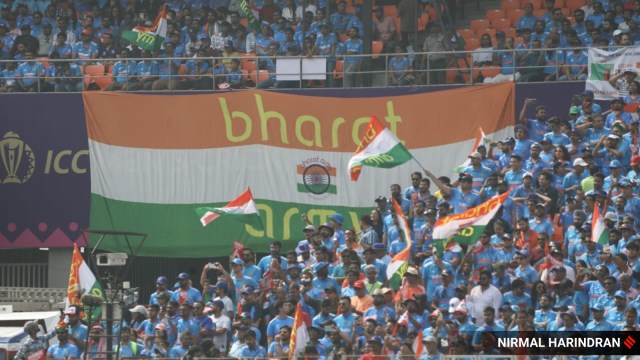
Glenn Maxwell’s final stroke against Afghanistan – the bat arcing through the air, defying heat, cramps and colossal odds, scripting one of the most fantastic results in the history of the game.
And according to many of the more optimistic fans of the format, the ball sailed across the ropes to rejuvenate the ailing game of One Day cricket.
The 2023 World Cup has perhaps done that. Perhaps it has not quite.
But it has been a much-required shot in the arm for the format. The world has tuned in, the crowds have flocked in, the stars have performed, dreams have been scripted and broken, the stumps have been hit and lit up, sixes have soared.
It was necessary for the tournament to be as fantastic as it has been. Unlike other World Cups, this was different. The stakes were not only the premier crown in the world of cricket. The tournament also needed to answer a burning question. Is the 50-over format still meaningful?
It is indeed difficult for the format to fit in.
Devised in the 1960s in England, when the increasingly tedious first-class and Test formats yearned for a fresh breath of life to keep the post-War generation interested, the One Day game grew as the shorter format. It took off in a big way from the late 1970s, with the initial World Cups followed by pyjama cricket championed by the Kerry Packer days and then the mad popularity in the Subcontinent and the oil-fuelled oasis of Sharjah. With the satellite revolution of the 1990s, the demand shot through the roof of logical expectations and financial dreams.
However, since quite a while, the format has been struggling. The coming of T20, a four-hour package tailor-made for the life and pockets of the modern day, has redefined the meaning of the short format to well-nigh instantaneous. The purists still drool over Test cricket, which is now pumped with Bazballish innovations derived from the shortest format. For those eager to enjoy cricket in small packets, there are innumerable franchise leagues and the occasional international T20Is to tune into. High-octane, adrenaline-charged, rivetingly close contests to be enjoyed with family and friends after the day’s work.
Where, then, does the 50-over game fit in? It is too drab, especially in the middle overs. And a day is too long to masquerade as a short format.
There are voices that proclaim that it is dying — voices that cannot quite be dismissed as false prophets. Without the sublime test that the longest format offers or the continuous surge of excitement available in the shortest, does the 50-over format have any value at all? And equally importantly, is there a space in the increasingly congested cricketing calendar for the format to be squeezed in?
Perhaps it required a World Cup to pool the interests from the different diversions within the world of cricket into one singular 50-over contest.
Whether it has done enough for the format to survive or not is not known. Only time will tell.
But the images produced by the month-long extravaganza have done their bit.
The continuous brilliance of the hosts has obviously helped with the popularity. The sustained genius of Virat Kohli or the youthful feats of Shreyas Iyer, be it the destructive relentlessness of Jasprit Bumrah and Mohammad Shami or the consistent guile of Ravindra Jadeja and Kuldeep Yadav — it has been a team of versatile and multi-dimensional talents as never before. The greatest Indian team ever, and that is an understatement.
But the fascination has been provided by more than just India. Be it the war-ravaged Afghanistan, rising from the ashes of destruction, riding the vehicle of the game to hope big and produce scintillating upsets. Be it the unfancied Netherlands leaving a couple of streaks of brilliant orange in its wake. Or be it the youthful mastery of Rachin Ravindra, discovering his roots and his soul in India, adding mystique to the performance with the curious tales surrounding his name. The World Cup has had plenty to offer.
There have been many fascinating tales.
With the semi-final poised on knife’s edge, left-arm wrist spinner Tabriaz Shamsi deceived the recent double-centurion Maxwell, beating the swinging bat and hitting timber. And then he went into one of the most uninhibited celebrations, an expression of unbridled joy that underlines all that makes us love the game.
There is life yet in the 50-over format. Life that was palpable in every exultant step in Shamsi’s celebratory run.
That is what the World Cup is about. It is passion, celebration and high stakes.
Has it done enough to revive the One Day format? It remains to be seen.
But it has been a hell of a World Cup.
Arunabha Sengupta is a cricket writer who lives in Amsterdam. His latest book Elephant in the Stadium was shortlisted for the Cricket Writers’ Club Book of the Year Award and the Heartache’s Cricket Book of the Year Award